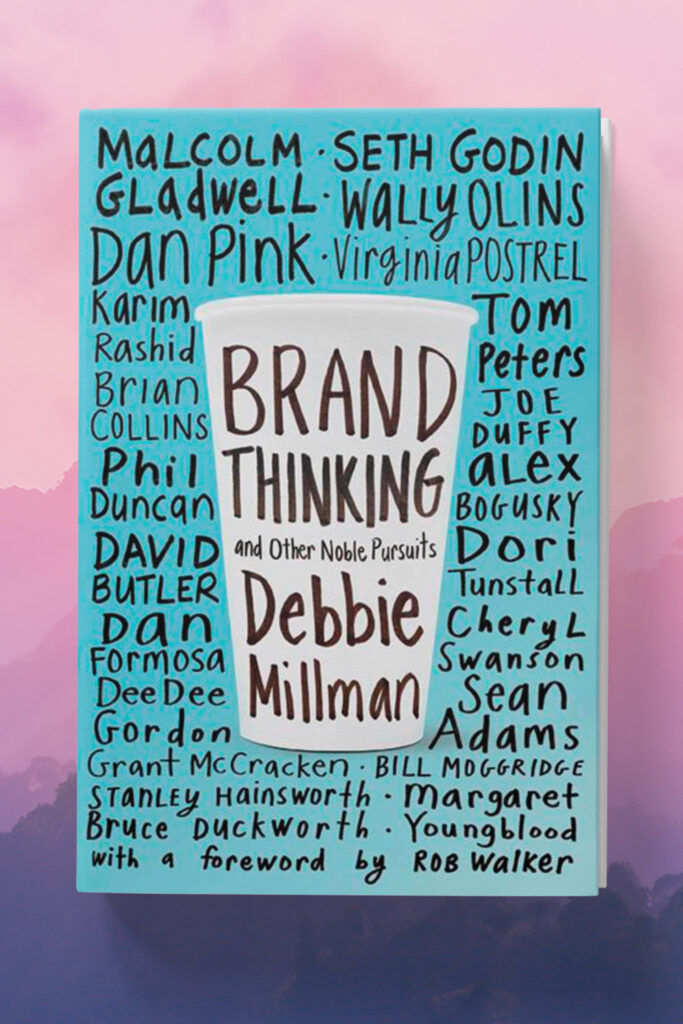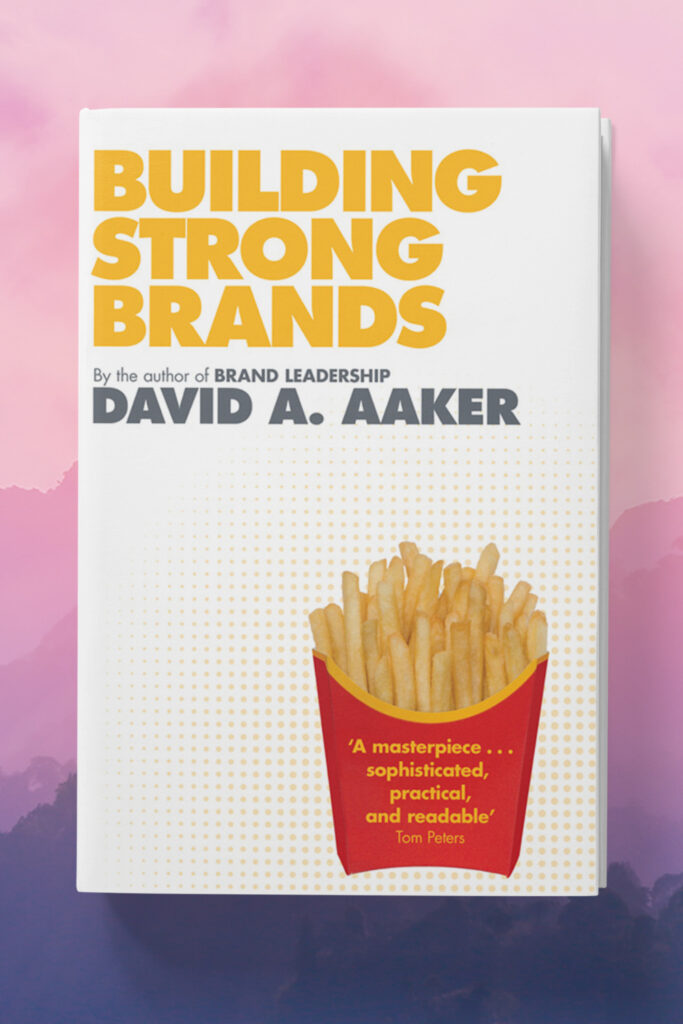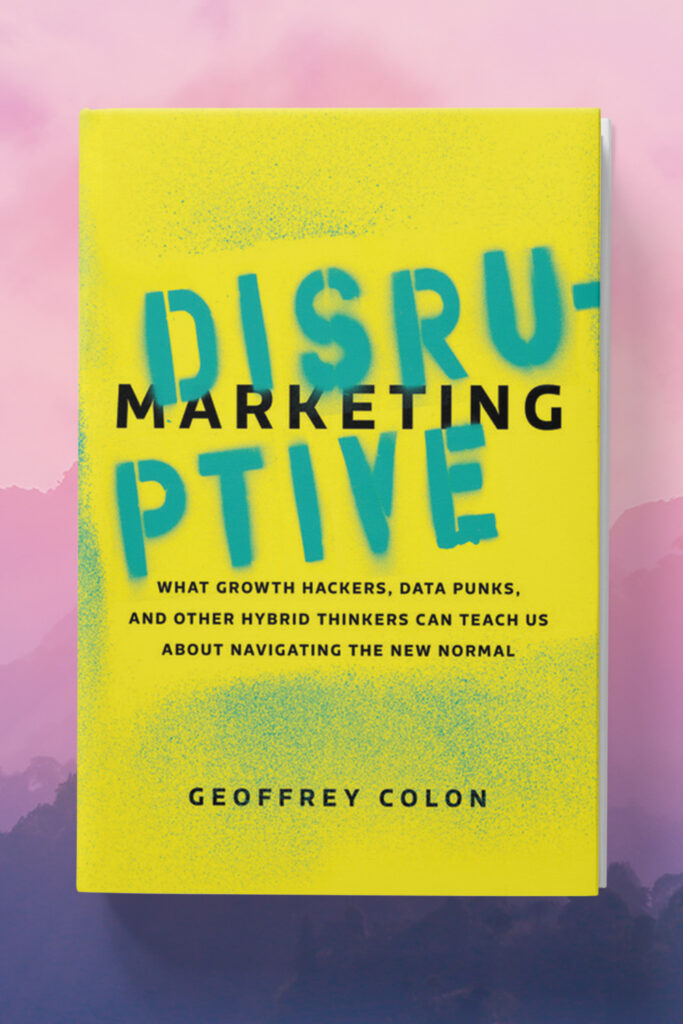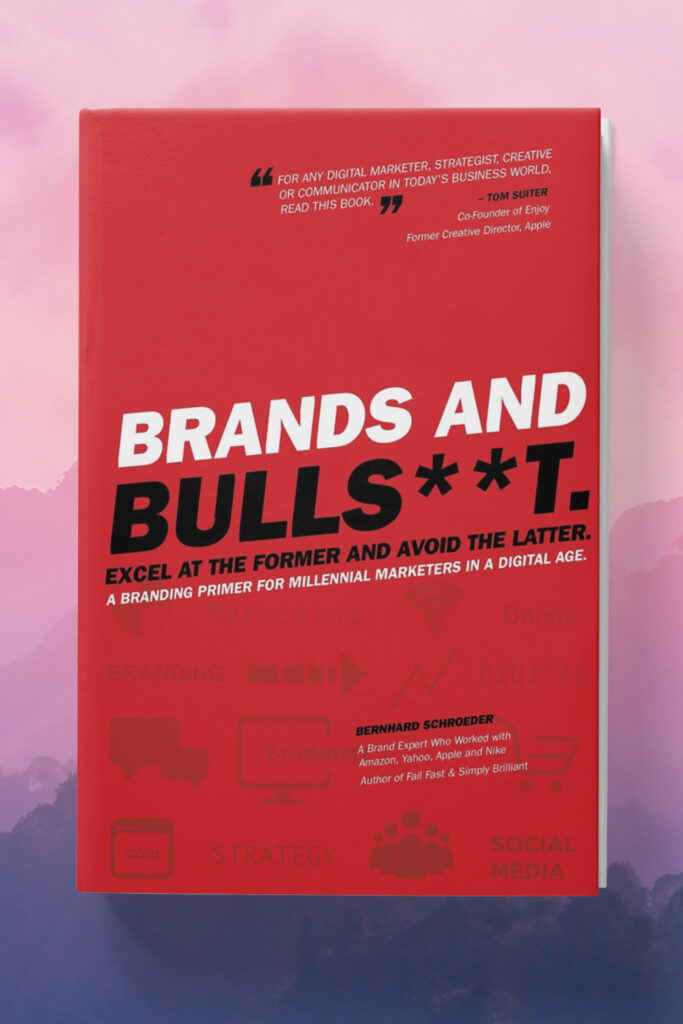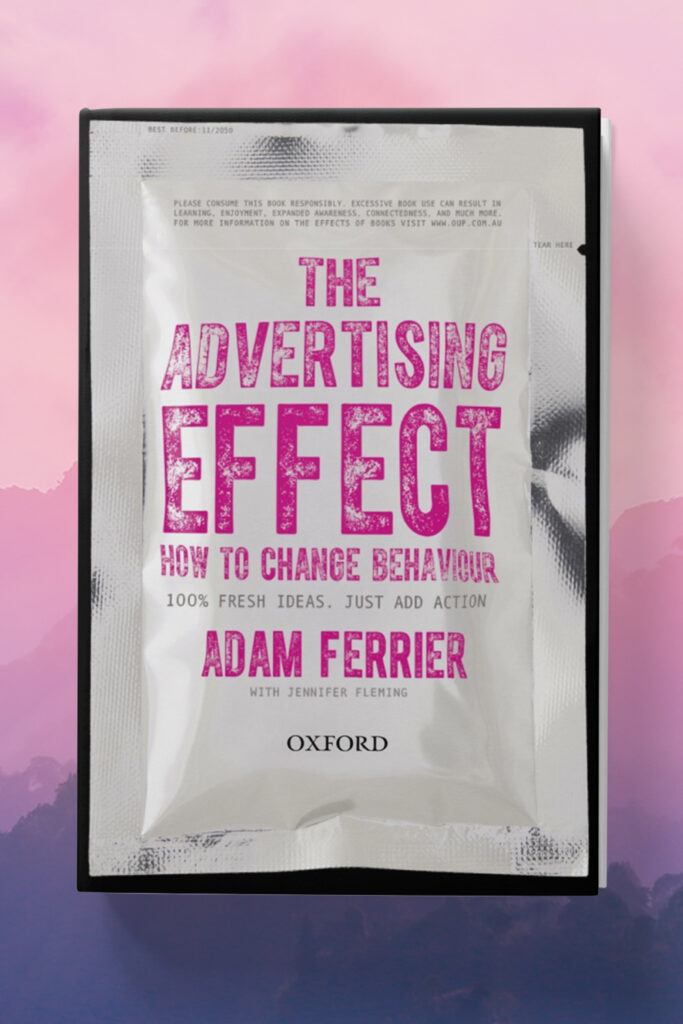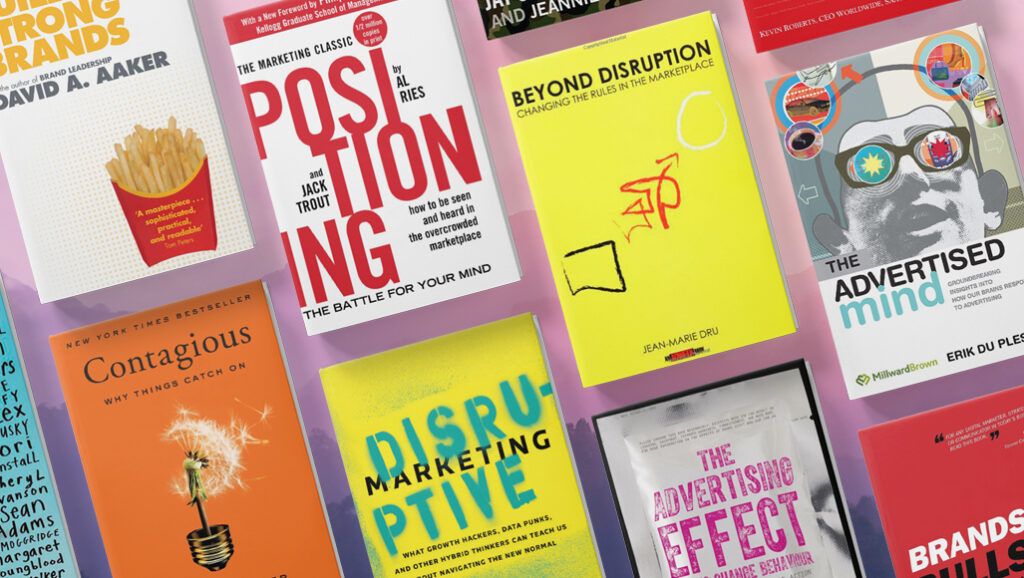
 10 Marketing Must-Reads for Brand Success
10 Marketing Must-Reads for Brand Success
“As a lifetime marketer and business owner, I’ve spent my life creating ideas and strategies that help grow other companies. These books, and the advertisers behind the pages, changed everything along the way. Now, I’m sharing them with you so they can help you, too.
If you’re looking for today’s top principles and formulas for driving success, look no further. Find the knowledge and tools you need to succeed in these great reads.”
– Paul Scoonover, President/CEO (Asen Marketing)
The Advertised Mind: Groundbreaking Insights into How Our Brains Respond to Advertising
by Erik Du Plessis
We’ve just begun to appreciate the inner workings of the mind and the power of emotions to connect with consumers on a deeper level. This groundbreaking book explains how the brain responds to advertising. Once you appreciate how the mind works, you can begin to craft messaging aimed at getting inside the mind and staying there. “The brand exists as a neural network of memories. There is only one memory that matters and that is the memory of the brand.”
More than 30,000 TV commercials were analyzed based on consumer reaction to develop a deeper understanding of the inner workings of the mind. The resulting data is a road map for the advertiser, with in-depth, usable information about how the brain absorbs, categorizes and recalls information. The most memorable advertising is based on emotion that evokes positivity.
How do you get the consumer from A to B… from thinking about your product to buying it?
By connecting with consumers on a deeper level based on the science of neural pathways. It depends on the strength of connections in the cortex. An object, like your product, fires off a series of complex triggers within the cortex. Understanding the wiring of the mind and your brain on advertising is a fascinating read that can shift your perspective on how to connect to consumers.
This book is presented first in the series because it underscores the three things that matter about advertising. In real estate, it’s “location, location, location.” In advertising, the three things that matter are “recall, recall, and recall.”
As the author says, “The job of advertising is to make itself remembered so that it can in some way influence the purchase decision.”
Brand Thinking and Other Noble Pursuits
by Debbie Millman
What do you like the most about the branding process? “I like the ability to influence. Larger brands have a disproportionate influence over our cultural dialogues and ideas. If you find a client who sees an opportunity to use the brand to build business by doing good, then you have a dramatic effect – not only on the success of the company and the brand, but also on people’s lives.”
This response, from Brian Collins, Chief Creative Officer, is one of many gems from interviews in a podcast series.
This book gives us a look behind the curtain into the exceptional creative and branding minds of our day.
It is a forum on the state of modern branding and how companies and consumers can understand the behavior behind why we brand and why we buy. Debbie Millman culled insights from interviews with top designers, cultural leaders, marketers and researchers. She turned these conversations into podcasts to give us a backstage pass to the great minds behind global brands and industry leaders.
Each interviewee has a unique view of the branding process, and interprets the needs of the consumer from a different angle. The result is a deep dive into the psychology of branding. Through this collection of gems of research, anthropological studies, ethnography studies and data, you will learn to better understand consumers and how to connect with them.
Beyond Disruption: Changing the Rules in the Marketplace
by Jean-Marie Dru
You might say that Jean-Marie Dru invented disruption. The TBWA Agency Network teaches disruption thinking to their clients. They help the client go through the disruption methodology and facilitate working directly with the client’s employees.
In Disruption, Dru shows you how to harness the enormous potential of this concept. Disruption is must reading for all advertising and marketing professionals, as well as business people who understand the value of creativity.
Disruption? It’s nothing new. It is about uncovering the culturally embedded biases and conventions that shape standard approaches to business thinking. It’s about shattering biases and conventions and setting creativity free to forge a radical new vision of a product, brand, or service. It’s about spearheading change rather than reacting to it. It leads to clearer, more creative thinking.
“Disruption is not a theory; it is a method. It is not static; it is dynamic.”
I recommend this as a trilogy of books to grasp the effect of disruption on society and understand it as a creative principle.
Guerrilla Marketing Remix
by Jay Conrad Levinson
Jay Levinson does his best to help the underdog. Guerrilla Marketing is the entrepreneur’s marketing bible with hundreds of ideas on how to promote your business in unusual, efficient ways. Levinson has published many different versions of this masterpiece but the core principle stays the same. How to break out of the normal channels of media and look at any opportunity to promote your company with the minimum amount of cost. You can utilize anything and change it into a media venue.
This book shows how to target prospects and cultivate repeat and referral business. Reach customers through Internet marketing strategies, podcasting and automated marketing. Manage freelancers and remote workers in the age of telecommuting.
Guerrilla marketing is the advantage against the odds and conventional wisdom.
Levinson takes common sense, adds a dash of opportunism and stirs it all up with a heaping tablespoon of irreverence to the status quo….and there you have it Guerrilla marketing.
Here’s a few sample definitions of marketing according to the master guerrilla:
“Marketing is not any single one of 200 weapons. It is the wise use of many of these in combination with each other.”
“Marketing without a plan is like going into battle under a commander who says; Ready… re…aim.”
“Marketing is truth made fascinating.”
“Marketing is the precious connection between you and whoever is buying what you sell.”
“Marketing is the art of getting people to change their minds.”
Building Strong Brands
by David A. Aaker
I have referenced these books on brand building many times when working on brand strategies for clients. Executives across many industries are trying to prevent their products and services from becoming commodities sold at the lowest price. Brands are the basis for sustainable advantage for most organizations. That’s why the renewed interest in branding has come to be the foundation of business strategy. Strong brands do not just happen by committee vote. They come from winning brand strategies and brilliant executions from committed, disciplined organizations.
This is branding on a different level, explained by a master brand strategist, David Aaker. Using Saturn, General Electric, Kodak, Healthy Choice, McDonald’s and others as a tool, Aker strips down the brands so we can see the architecture that’s behind it. He shows how that brand architecture relates to the value of the product of the company. This is a step-by-step through branding, giving the reader a complete understanding of a brands values, and many aspects of what makes good branding.
Aaker takes the complex and breaks it down so we can better understand the process and the value of branding. The book is full of beautifully articulated schematic renderings showing the brand strategy structure and other structural illustrations. The book shows how he categorizes, compartmentalizes, and breaks down branding. Then, he puts the brands back together in simple, concise, succinct graphical wireframes for better understanding.
Disruptive Marketing: What Growth Hackers, Data Punks, and Other Hybrid Thinkers Can Teach Us About Navigating the New Normal
by Geoffrey Colon
Should we just forget everything we knew before? No. But, we may have to turn it upside down. Disruptive Marketing is an anti-establishment approach that reverses our conventional wisdom of marketing. Technology reshaped behavior and that means traditional marketing is dead. Toss the linear marketing plan and strip away conventions. Conventional marketing has been replaced with growth hacking.
A few insights on disruption: Using a social business model lets marketing do more with less. Why? Content is still King, but Distribution is the Queen.
The all-important brand has been replaced with customer marketing.
Price is no longer the trump card. One third of consumers are motivated by service. If you learn to follow the fringes of small circles of consumers, you can predict the next mass movement.
This book is packed with trends, predictions, interviews with big-think marketers, and stories from a career spent pushing boundaries. It creates a simple pathway to reveal the future of marketing based on the experience and knowledge of Geoffrey Colon. Excellent when paired with his podcasts, Disruptivefm. Also, learn more at his website — geoffreycolon.net
Contagious: Why Things Catch On
by Jonah Burger
I’d be rich if I had a dollar for every time a client said, “We need something that goes viral.” The magic bullet of marketing. Contagious outlines the “STEPPS” to going viral in social media. Burger’s acronym, STEPPS, stands for Social currency, Triggers, Emotion, Public, Practical value, and Stories.
The STEPPS quickly dispel the myth and magic about how something goes viral.
Don’t be fooled by the acronym. Contagious is filled with fascinating information drawn from research. As communication changes, social media will continue to have a stronger effect on all aspects of marketing. This book is a true road map for making something exceptionally memorable. It’s not as easy as it sounds to “go viral.” Burger has a formula that makes sense.
Brands and Bulls**t
by Bernhard Schroeder
This is the branding book every digital marketer has been waiting for. Schroeder closes the gap between traditional branding and digital selling. He becomes a brand mentor teaching the fundamentals of branding with all its nuances. As a digital marketer, are you marketing banner ads or building brands? Do you know what a brand decision tree or a category ladder is?
This book takes the reader deep into research, ethnography, psychographics and all the data making up an excellent base of knowledge for creating exceptional brands. The author did a lot the original branding for Amazon, and he draws from over 20 years experience with some of the best brands and branding experts in the world.
- Understand branding in a digital world
- Create a powerful brand that creates a customer “feeling”
- Develop specific brand strategies that work in the marketplace
- Review 10 possible brand strategies and understand their potential
- Understand how positioning and category ladders work and why
- Utilize tools like brand decision trees to simplify complex brand choices
- Create a branding strategy for a client or company that targets a blue ocean
- Begin to comprehend the new four P’s of marketing and their impact
- Learn how to quickly create a brand plan with the Brand Planer
To be a great marketer, you need more branding insight and tools.
You definitely need to understand the difference between branding and bulls**t. I had wondered when someone would write a book about the subject of digital versus traditional marketing. Here it is. Enjoy!
Positioning: The Battle for the Mind
by Al Ries & Jack Trout
This book changed everything back when it was written in 1981. The updated edition contains great examples and continues to explore one of the most powerful marketing concepts. Positioning is the place in the mind of the consumer where your product is filed. It is how a consumer distinguishes your product from your competitors. Everything about the brand must conform to the brand’s position in the consumer’s mind. Once a brand has achieved a strong position, it can be difficult to reposition.
The essence of positioning thinking is to accept the perception as reality and then restructure those perceptions to create the position you desire.
We all have positioning “ladders.” This is how products and services are stacked up in categories in our minds. Why do we have positioning ladders? Because the amount of information coming at us each day is in the millions of data points and the mind needs a way to quickly organize and store this information.
The positioning concept became very in uential and continues to evolve in ways that ensure it remains current and relevant to practicing marketers. Positioning is critical to any product or service business, because positioning is like the foundation of a house. You can’t build a brand without first understanding its position in the marketplace.
Coca Cola, Pepsi, Sprite — each one of these products lies in a positioning ladder inside the consumer’s brain. The purpose of positioning is to recognize these ladders; then decide where to position your product or service inside these ladders.
The Advertising Effect
by Adam Ferrier & Jennifer Fleming
This book should motivate your next marketing move. Adam Ferrier uses his knowledge of human behavior like a master chess player. His moves combine PR, Advertising, and social media in ways that require the consumer to make the next move. Using his Master’s degree in psychology, Ferrier gets consumers to connect and respond. There are three ways to change behavior: thoughts, feelings and actions.
A few of Ferrier’s psychology principles in action:
- People behave like zombies. If something blocks their path they’re likely to stop. Anticipate obstacles and design for mistakes.
- Humans have an innate need to play. Play is ideal for influencing behavior.
- Emotion opens the door to behavior change. It o ers the initial shock to act. Other tools are needed to effect change.
- Collectivism uses the psychological principles of obedience, conformity and action to influence behavior.
One of my favorites is the Ben Franklin Effect. Ben Franklin discovered that a person who has done someone a favor is more likely to do that person another favor than they would have had they received a favor. Ferrier shows how the industry is using this principle to change opinions about their brands, and then spur a change in their behavior. But, the biggest predictor of future behavior is past behavior. You shouldn’t expect too much change.
Bonus Book
We couldn’t leave out this book so here’s a bonus book recommendation! This book is an inspiration and instruction guide to create emotional connections and win in this consumer-empowered future we live in.
Lovemarks: The Future Beyond Brands
by Kevin Roberts & A.G. Lafley
“We have moved from the attention economy into the participation economy.”
“ROI… Return on Investment has become Return on Involvement.”
Why are advertisers in love with Lovemarks? It’s beautiful like a coffee table book, and it’s the next generation for marketing. As the CEO of Saatchi & Saatchi, Roberts brought the Lovemarks series as a love letter to the world of advertising. The business world loves Lovemarks, too. Tom Peters declared the first edition of Lovemarks as the, “Best Business Book” published in the first five years of this century.
Isn’t a “lovemark” just a nice word for a “brand?” It’s more. “Brands are owned by brand managers, marketing managers and shareholders. Lovemarks are owned by the people who love them, buy them, and talk about them.”
The thrill is gone. Roberts confirms that is the state of traditional branding. What’s needed is a love affair with customers. Brands are based on benefits and attributes, “Bigger, faster, wider, cheaper, newer… Lovemarks are built on respect and love. Lovemarks create loyalty beyond reason.”
The good news is, if you love Lovemarks, there is a sequel. The Lovemarks Effect: Winning in the Consumer Revolution, Loveworks and Lovemarks: The Saatchi and Saatchi Designer’s Edition.
In this book, the people speak: consumers, owners, and marketers show the impact of Lovemarks on their lives, their businesses, and their aspirations. How consumers feel about your company—their emotional connection to you—is what now determines success.
Share this…
Check out what we’re reading at Asen!

